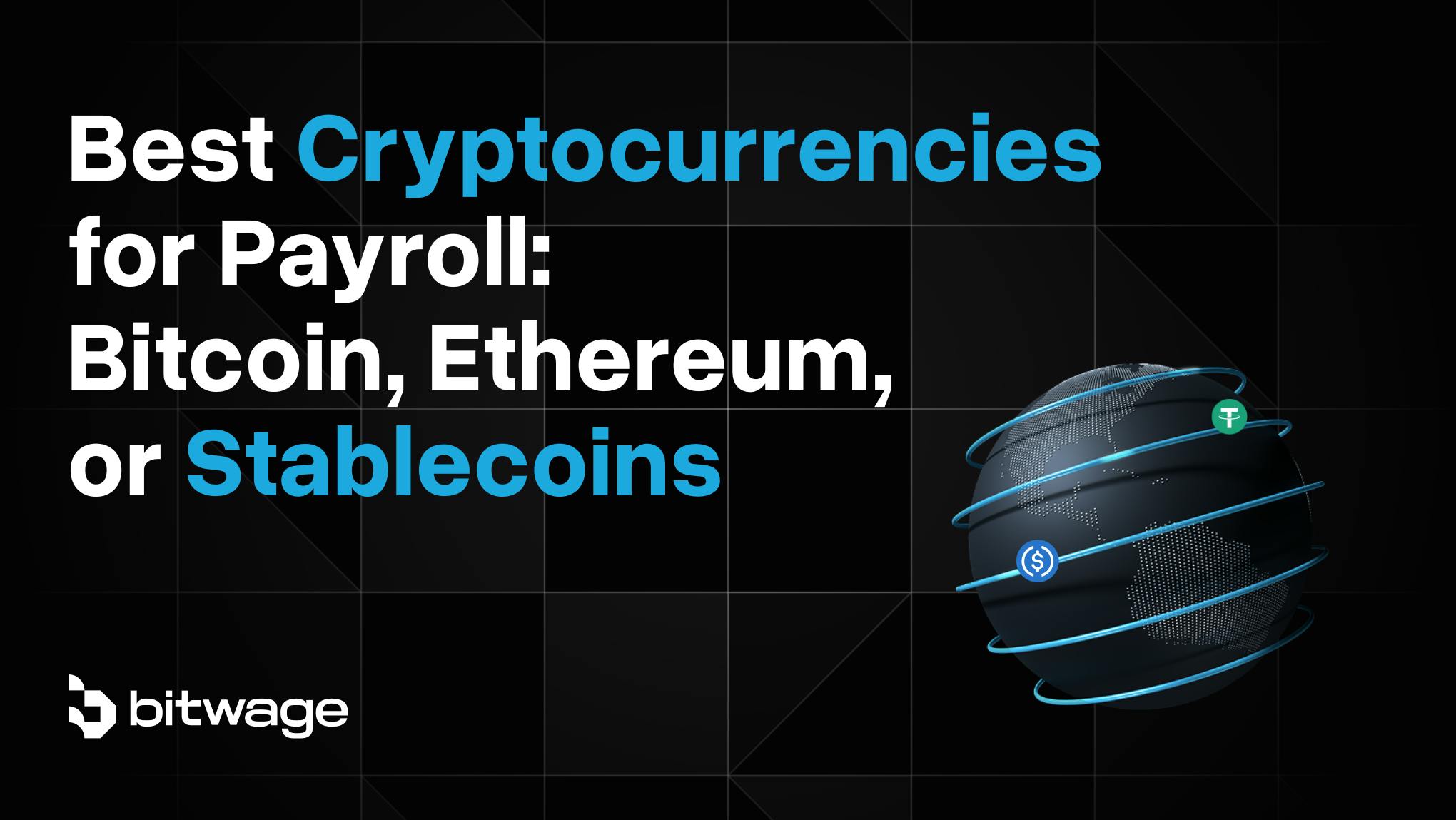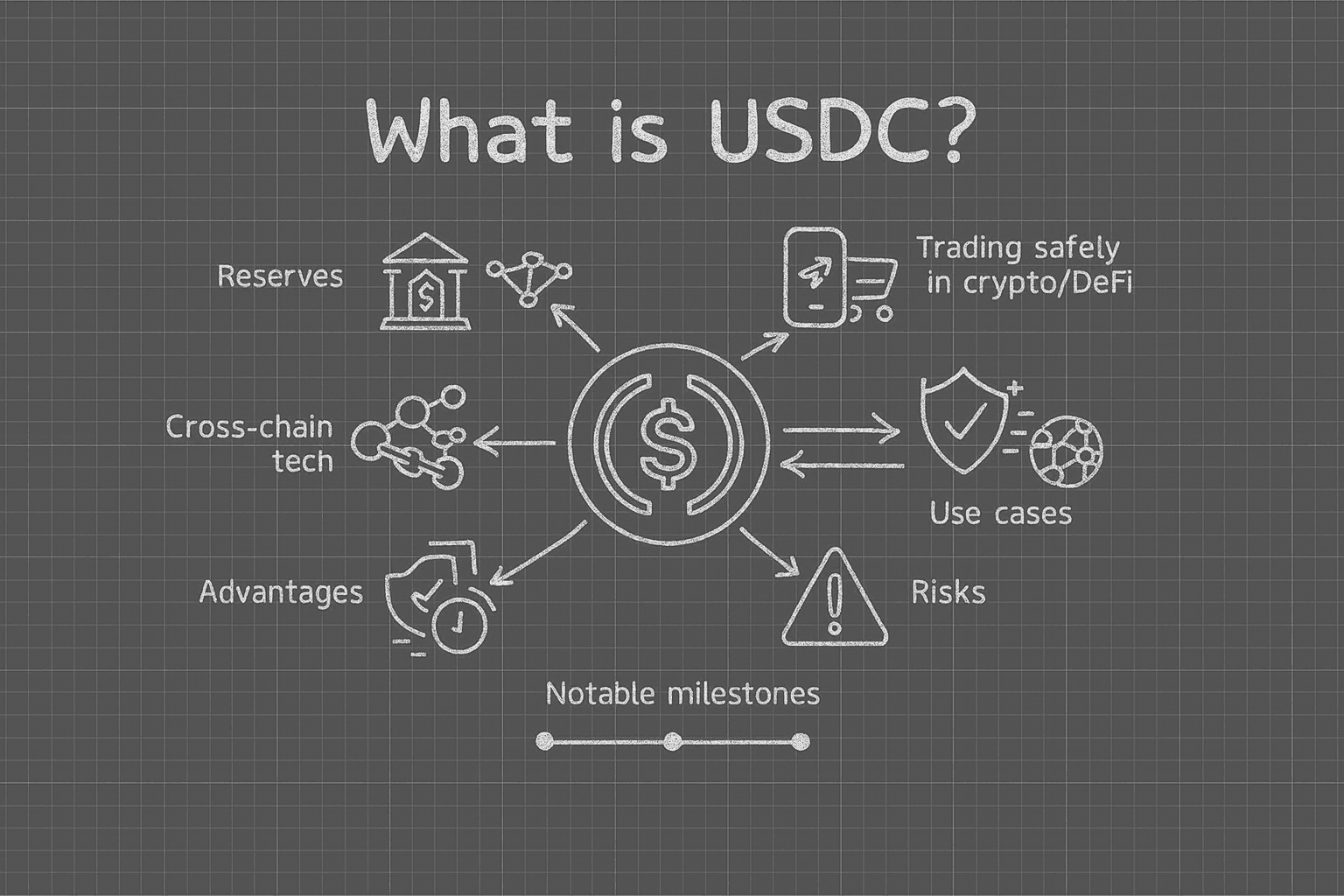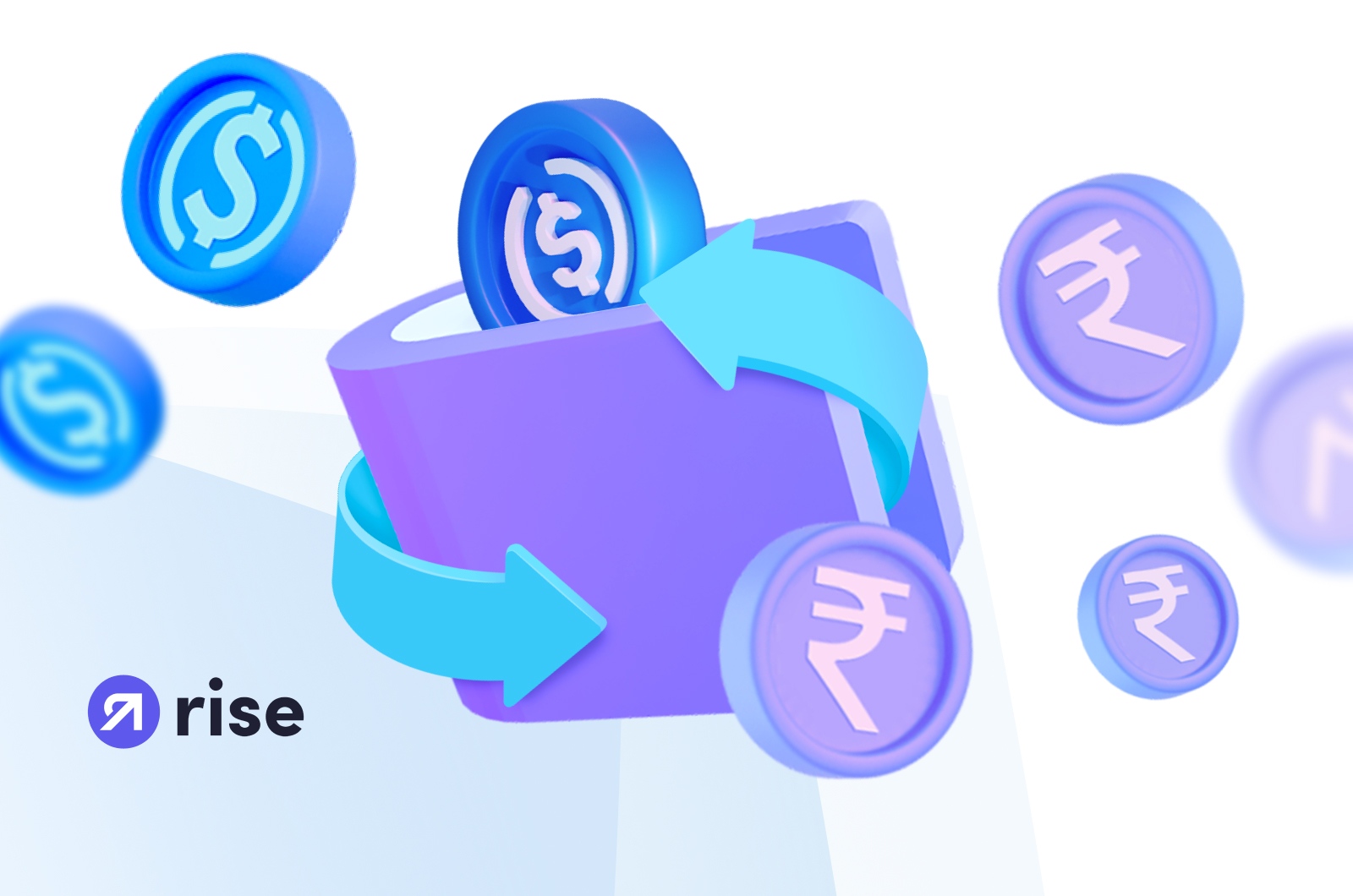
Crypto payroll adoption has reached a pivotal inflection point. In 2024, the share of workers receiving salaries in digital assets nearly tripled, surging from 3% to 9.6%. What’s even more striking is that USDC (USD Coin) now commands a dominant 63% share of all crypto payroll transactions, far outpacing its nearest competitor, USDT, which holds just 28.6%. This rapid shift is not just a headline – it signals a fundamental change in how global businesses are approaching cross-border payments and remote team compensation.
USDC’s Explosive Growth: The Data Behind the Surge
Monthly transaction volume for USDC hit an astonishing $1 trillion in November 2024 alone, with all-time volume surpassing $18 trillion. Stablecoins processed $8.9 trillion in payroll-related flows last year, according to the 2025 Crypto Payroll Report. Institutional adoption is still ramping up, but individual and startup demand for stablecoin salaries has already tripled year-over-year. This surge is especially pronounced among startups, tech companies, and contractors operating across borders.
Cryptocurrency Price Comparison: USDC, USDT, and Bridged Stablecoins (2025)
Comparing the value and stability of Multichain Bridged USDC on Fantom, native USDC on Ethereum, and leading stablecoins over the past 6 months.
| Asset | Current Price | 6 Months Ago | Price Change |
|---|---|---|---|
| Multichain Bridged USDC (Fantom) | $0.0444 | $0.0444 | +0.0% |
| USD Coin (USDC) | $0.9998 | $0.9998 | +0.0% |
| Native USDC (Ethereum) | $0.9998 | $0.9998 | +0.0% |
| Tether (USDT) | $1.00 | $1.00 | +0.0% |
| Dai (DAI) | $1.00 | $1.00 | +0.0% |
| Binance USD (BUSD) | $1.03 | $1.03 | +0.0% |
| Bitcoin (BTC) | $112,435.00 | $112,435.00 | +0.0% |
| Ethereum (ETH) | $4,149.12 | $4,149.12 | +0.0% |
Analysis Summary
The table highlights that native USDC on Ethereum, USDT, DAI, and BUSD have all maintained their peg to the US dollar over the past six months, showing minimal to no price fluctuation. In stark contrast, Multichain Bridged USDC on Fantom is trading at a significant discount ($0.0444), indicating a severe depegging event. Bitcoin and Ethereum prices remain unchanged in this snapshot, reflecting the stablecoin focus of this comparison.
Key Insights
- Native USDC on Ethereum, USDT, DAI, and BUSD have all maintained their dollar peg with virtually no price change over six months.
- Multichain Bridged USDC on Fantom is trading at just $0.0444, reflecting a major loss of value and depegging from $1.
- This discrepancy underscores the risks associated with bridged assets on non-native chains, especially in the event of bridge failures or liquidity issues.
- USDC’s stability and regulatory compliance on Ethereum have contributed to its dominance in global crypto payroll, while bridged versions may not offer the same reliability.
All prices and changes are sourced directly from the real-time market data provided above, with no estimates or extrapolations. Each asset’s current and 6-month historical price is listed exactly as reported by the referenced data sources.
Data Sources:
- Main Asset: https://ycharts.com/indicators/usd_coin
- Multichain Bridged USDC on Fantom: https://www.coingecko.com/en/coins/multichain-usdc/historical_data
- Native USDC on Ethereum: https://ycharts.com/indicators/usd_coin
- Tether: https://www.coingecko.com/en/coins/tether/historical_data
- Dai: https://www.coingecko.com/en/coins/dai/historical_data
- Binance USD: https://www.coingecko.com/en/coins/binance-usd/historical_data
- Bitcoin: https://www.coingecko.com/en/coins/bitcoin/historical_data
- Ethereum: https://www.coingecko.com/en/coins/ethereum/historical_data
Disclaimer: Cryptocurrency prices are highly volatile and subject to market fluctuations. The data presented is for informational purposes only and should not be considered as investment advice. Always do your own research before making investment decisions.
The current price of Multichain Bridged USDC (Fantom) stands at $0.0444, with a 24-hour range between $0.0444 and $0.0532. While this represents a discount from the native USDC peg due to bridging mechanics and market fragmentation on certain chains, it does not undermine the overwhelming preference for native USDC as the settlement layer for global payrolls.
Why Are Companies Choosing USDC Payroll?
Top Reasons Businesses Choose USDC for Global Payroll
-

Market Leadership in Crypto Payroll: In 2024, USDC accounted for 63% of all crypto payroll transactions, far surpassing USDT’s 28.6% share and establishing itself as the dominant stablecoin for salary payments. (Source: Pantera Capital, Cointelegraph)
-

Stability and Transparency: USDC is fully backed by U.S. Treasury bonds and maintains a 1:1 peg to the U.S. dollar. Issuer Circle provides regular reserve disclosures, ensuring transparency and minimizing volatility for payroll recipients. (Source: BTCC, Circle)
-

Regulatory Compliance: Circle has proactively sought regulatory approvals, including a federal trust bank charter, and the GENIUS Act (2025) established USDC as a model for compliant digital dollars. This regulatory clarity reduces risk for businesses. (Source: Cointelegraph, U.S. Congress)
-

Enterprise Adoption and Partnerships: Major payroll platforms like Rise and Remote have integrated USDC, enabling instant cross-border salary payments. Strategic partnerships, such as with Intercontinental Exchange (ICE), further expand USDC’s enterprise utility. (Source: Chainwire, Coinmarketcap)
-

Global Accessibility and Efficiency: USDC enables rapid, low-cost international transactions across 69+ countries, providing a stable alternative to volatile local currencies and bypassing banking restrictions for global teams. (Source: Coinmarketcap, Stripe)
The rationale behind this migration is both technical and practical:
- Stability: USDC maintains a strict 1: 1 peg with the U. S. dollar on major chains, minimizing volatility risk for employees and employers alike.
- Transparency: Circle publishes regular reserve audits and backs each token with short-term U. S. Treasury bonds or cash equivalents.
- Regulatory Compliance: Circle’s proactive regulatory approach – including seeking a federal trust bank charter – sets it apart from less transparent stablecoins.
- Speed and Cost Efficiency: Payroll platforms such as Rise have reduced cross-border payment times from days to seconds using USDC rails.
- Global Reach: Platforms like Remote (in partnership with Stripe) enable seamless payouts in USDC across 69 countries, bypassing traditional banking friction.
The Regulatory Edge: GENIUS Act and Trusted Infrastructure
A defining moment came with the passage of the GENIUS Act in July 2025, which established comprehensive rules for stablecoin issuers operating in the United States. Notably, USDC was cited as a model for compliant digital dollars, further cementing its role as the gold standard among payroll-focused stablecoins. Circle’s transparency – including regular disclosures about reserves – continues to attract enterprise clients wary of regulatory or counterparty risks associated with other tokens.
Pushing Beyond Borders: Efficiency and Accessibility
The unique advantage of cross-border payroll using USDC lies in its ability to deliver real-time payments at minimal cost – an essential feature for remote teams operating outside established financial centers or facing local currency instability. Contractors working through platforms like Rise have shown strong preference for withdrawing their earnings in native USDC rather than fiat alternatives; over half chose this option by June 2025 after more than $650 million had been distributed globally via these rails.
For businesses, the operational efficiency gained through USDC payroll is not simply theoretical. Settlement times that once spanned several days for international wires have been reduced to mere seconds, and transaction costs are often less than $1 per transfer. This is particularly impactful for companies managing distributed teams in regions where banking infrastructure is limited or unreliable.

Moreover, the transparency of on-chain transactions allows both employers and employees to track payments in real time, eliminating ambiguity around payment status and reducing reconciliation errors. These features are especially valued by startups and digital nomads who prioritize agility and predictability in cash flow management.
Taxation and Reporting: The Next Challenge
No discussion of crypto payroll adoption would be complete without addressing the evolving regulatory landscape around taxation. While the GENIUS Act has clarified stablecoin issuer obligations, tax treatment for crypto-based salaries varies significantly across jurisdictions. Companies must invest in robust reporting tools to ensure compliance with local tax authorities when paying remote workers in USDC or any digital asset.
This complexity has created a burgeoning market for specialized payroll platforms that automate withholding, generate compliant payslips, and integrate with both crypto wallets and traditional accounting software. As adoption accelerates, expect further innovation at this intersection of compliance tech and blockchain infrastructure.
USDC vs USDT: Why Market Share Matters
The debate over USDC vs USDT payroll is not just about liquidity or brand recognition. USDC’s dominance in global payroll crypto stems from its transparent reserve structure and proactive engagement with regulators, factors that directly influence enterprise risk assessments. By contrast, persistent questions about USDT’s backing have led many risk-averse organizations to favor USDC as their primary settlement asset.
Stablecoin Price Comparison: USDC.e vs. Major Stablecoins
6-Month Price Performance of Multichain Bridged USDC (Fantom) and Leading Stablecoins (as of 2025-09-22)
| Asset | Current Price | 6 Months Ago | Price Change |
|---|---|---|---|
| Multichain Bridged USDC (Fantom) (USDC.e) | $0.0444 | $0.0472 | -5.9% |
| Tether (USDT) | $1.00 | $1.00 | +0.0% |
| Dai (DAI) | $0.9998 | $1.00 | -0.0% |
| Binance USD (BUSD) | $1.03 | $1.00 | +2.6% |
| TrueUSD (TUSD) | $0.9994 | $1.00 | -0.1% |
| Pax Dollar (USDP) | $0.000037 | $1.00 | -100.0% |
| Frax (FRAX) | $0.9976 | $1.00 | -0.2% |
| USD Coin (native) (USDC) | $1.00 | $1.00 | +0.0% |
Analysis Summary
Most major stablecoins, including USDT, DAI, and native USDC, have maintained their 1:1 peg to the US dollar over the past six months. In contrast, Multichain Bridged USDC (Fantom) (USDC.e) has experienced a notable decline of 5.9%, and Pax Dollar (USDP) has seen a dramatic collapse, losing nearly all its value. BUSD is the only stablecoin in this comparison to show a positive price change (+2.6%).
Key Insights
- USDC.e (Fantom) has lost 5.9% of its value over the past six months, diverging from the typical stability of major stablecoins.
- Native USDC, USDT, and DAI have all maintained their pegs, with virtually no price movement.
- Pax Dollar (USDP) experienced a catastrophic depegging, dropping 100% in value.
- Binance USD (BUSD) showed a rare positive price change among stablecoins, rising 2.6%.
This comparison uses only real-time market data as provided, with prices and percentage changes sourced directly from CoinGecko historical data snapshots for each asset as of 2025-09-22.
Data Sources:
- Main Asset: https://www.coingecko.com/en/coins/multichain-bridged-usdc-fantom/historical_data
- Tether: https://www.coingecko.com/en/coins/tether/historical_data
- Dai: https://www.coingecko.com/en/coins/dai/historical_data
- Binance USD: https://www.coingecko.com/en/coins/binance-usd/historical_data
- TrueUSD: https://www.coingecko.com/en/coins/trueusd/historical_data
- Pax Dollar: https://www.coingecko.com/en/coins/pax-dollar/historical_data
- Frax: https://www.coingecko.com/en/coins/frax/historical_data
- USD Coin (native): https://www.coingecko.com/en/coins/usd-coin/historical_data
Disclaimer: Cryptocurrency prices are highly volatile and subject to market fluctuations. The data presented is for informational purposes only and should not be considered as investment advice. Always do your own research before making investment decisions.
The current price of Multichain Bridged USDC (Fantom) remains at $0.0444. While this reflects unique factors related to bridging on Fantom, native USDC continues to trade at parity on major chains, underscoring its reliability as a salary medium even as market fragmentation persists across L1s and L2s.
The Future of Global Payroll: What Comes Next?
The data is unambiguous: stablecoin salaries, led by USDC, are no longer niche, they’re mainstreaming at a pace few anticipated just two years ago. With Circle’s ongoing partnerships (including ICE integration for derivatives markets) and the rapid expansion of compliant payout platforms, the next phase will likely see institutional adoption catch up to individual demand.
For forward-thinking organizations seeking a frictionless way to pay talent worldwide, whether via direct wallet transfers or integrated HR/payroll platforms, embracing USDC over traditional wire transfers delivers measurable advantages in speed, cost efficiency, transparency, and regulatory clarity.
The coming year will test how quickly legacy systems can adapt as more workers expect, and demand, the benefits of borderless digital salaries. For now, the numbers speak for themselves: USDC has set the standard for global crypto payroll, with technical infrastructure and regulatory alignment that competitors have yet to match.






